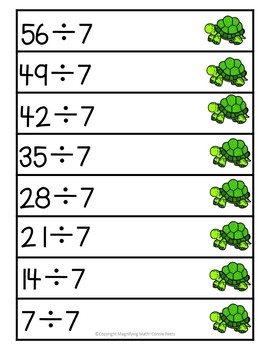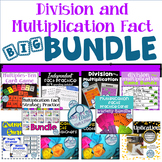Division and Multiplication Fact Practice Game Bundle
- Zip
Products in this Bundle (3)
Bonus
Also included in
- Get your hands on ALL my resources for multiplication and division fact practice. This now includes both digital and print resources! You will find tools, games, strategy posters, a systematic, individualized fluency tool, fact practice cards, holiday and seasonal cootie catchers and goal sheets. AnPrice $140.00Original Price $202.00Save $62.00
Description
These multiplication games provides practice division and multiplication facts along with the concept of multiplying by 10 and 100. This will support students as they move to 2- and 3- digit multiplication. Print and cut the strips use a cup or container to hold the strips. This game is perfect for small groups during independent math centers, as a whole class warm-up or for early finishers. This game can be differentiated by limiting the facts used. Mix multiplication and division or create two games with the facts separated.
This bundle also includes student recording sheets to support the practice with fact families and independent accountability.
*****************************************************************************
Pair this resource with:
Multiplication Fact Practice Cards Differentiated
Multiplication Facts Mastering Strategically and Systematically
Math Facts Cootie Catcher Bundle
*****************************************************************************
Customer Tips:
How to get TPT credit to use on future purchases:
• Please go to your My Purchases page. Beside each purchase you'll see a Provide Feedback button. Simply click it and you will be taken to a page where you can give a quick rating and leave a short comment for the product. Each time you give feedback, TPT gives you feedback credits that you use to lower the cost of your future purchases. I value your feedback greatly as it helps me determine which products are most valuable for your classroom, so I can create more for you. ☺
Be the first to know about my new discounts, freebies and product launches:
• Look for the click here to become a follower. Voila! You will now receive email updates about this store. It pays to follow me; all new resources are 50% off for the first 24 hours. ☺
Thanks! Connie
*****************************************************************************






